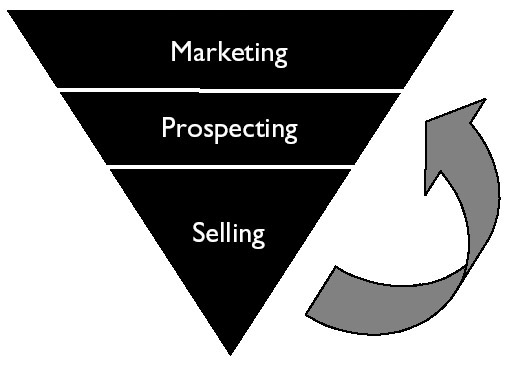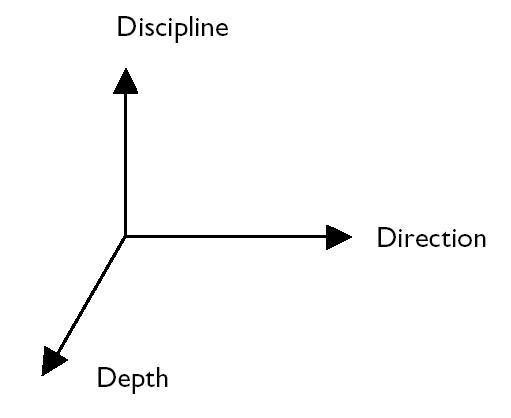Westside Toastmasters is located in Los Angeles and Santa Monica, California
Part I: Make the Sale—Four Strategies To Produce High-Value Solutions and Build Lasting Customer Relationships
List of Rules
-
Rule 1: Create High Value
Rule 2: Decide on Your Market
Rule 3: Develop Customer Expertise in Your Market
Rule 4: Build Relationships for Repeat Business
"Our philosophy is to sell the way the customer wants to buy."
—John W. Marriott III, executive vice president, lodging, Marriott International
Think of Your Own Buying Experience
Think about the best and worst buying experiences you've ever had. What did the salesperson do to make it a good experience? What did the salesperson do to make it a bad one?
Isn't it easier to remember the worst experience? When we have bad buying experiences, what do we do? We often make an emotional vow never to do business with that individual or company again.
What contributes to the worst experiences? Customers say such things as:
Not listening
High pressure
Talking down to me, being rude
Selling me a less than ideal solution and not telling me
Not doing or delivering what was promised
What contributes to the best experiences?
Listening and learning about me, being prepared, knowing my situation
Declining to sell me something that isn't right
Doing more than expected
Helping me be a more educated buyer
You might know what it takes to be the best, but do you have the motivation to do it? Do you appreciate the benefits? Do you have the time to do it? Do you know how? There is a huge void between knowing something and doing it, between doing something and doing it well.
Sales leaders strive to be the best. They don't settle for less. They don't want their customers to settle for less than the best, either. Sales leaders take the initiative to continually improve. Leadership starts with initiative. It relies on being willing to make changes and to take risks in new areas. Sales leaders take no comfort in the status quo. They know the comfort it brings is fleeting.
The Model
Sales leaders have carefully thought through the principles on which their business is founded. (And they do look at what they do as a business.) They have answered these three fundamental questions:
Why are you in business?
What do you want to accomplish?
How do you plan on doing it?
They also execute their plans extremely well, attending carefully to details and taking into account the uncertainties of future projections and the quirky contingencies that can arise.
We'll call the model described here market-based selling (figure 2). The model is designed specifically for the sales professional. It is based on the belief that before you sell, you must be clear about whom you are selling to and why. Companies must successfully market their products and services in order to survive. As a sales professional, you must market yourself successfully to stand out from the crowd. Prospecting is about developing the market you've identified. Selling is about getting in front of the customer. What happens if one "link" is missing? Simple: no commission check.
If you haven't identified the people you want to market to, how will you find them? If you don't prospect, whom will you sell to? You will be at the behest of whatever business happens to come your way based on existing customers, which could be good but may not be enough and will diminish over time.
Defining your market is about finding the right prospects. This is more about quality than quantity. Prospecting and cold calling depend on numbers—it's all about quantity. The more people you get in front of, the more chances you have to sell. Selling is about finding the right problems, the ones customers are feeling. When you are in front of customers, it isn't about numbers—it's about preparation and planning, about asking the right questions.
The arrow in figure 2 shows that you must get feedback from your customers. Sales professionals must seek feedback from customers in order to know what they are doing right and what they need to improve, just as companies do.
The concept behind this model is that the best salespeople are good not only at selling, but at marketing. They understand who their customers are and what they have to offer them that is unique or special. They understand how to position themselves with their market to take maximum advantage of their strategic strengths. Sales leaders blend the marketing and sales function. They place a lot of emphasis on understanding their market before they start selling to it. They are also adept at working with their marketing people to develop special features or products to meet customer needs.
Top producers don't rely on high-pressure tactics. Instead, they earn the customer's business by understanding the customer, the customer's industry, and the customer's customers. They build trusting relationships with customers and help them solve problems and take advantage of opportunities. They understand which customers they serve best and how to serve them. Serving customers well requires continually improving. This might sound straightforward and easy, but it takes critical self-evaluation, commitment, self-discipline, and continuous training and learning.
This resource is intended to provide information, examples, and opportunities you can apply and personalize to your business. It is designed to be practical so that you can get the information you need quickly. Developing well-considered answers to the questions the book poses and then applying them consistently will help you improve sales effectiveness, income, and profits.
The three elements of this model, which are explored in Part I and shown in figure 3, include the following:
Discipline, which describes how to deliver high-value solutions
Direction, which describes how to decide on a market
Depth, which describes how to develop expertise in your market
The first element of the model, discipline, will help you be clear about what value is in specific forms and in the customer's eyes.
The second element of the model, direction, will help you be clear about who your best customers are and how you can deliver high-value solutions to them.
The third element of the model, depth, will allow you to become highly knowledgeable about the customer's business, comprehending it from a different perspective, and even understanding it better than the customer does in some respects.
Because you're in sales, you've found things that work for you. Keep on doing them. You've probably also found some things that don't work quite as well as you would like. This resource will help you understand why the things that work well for you work the way they do and what you can do to change the things that aren't working so well.





